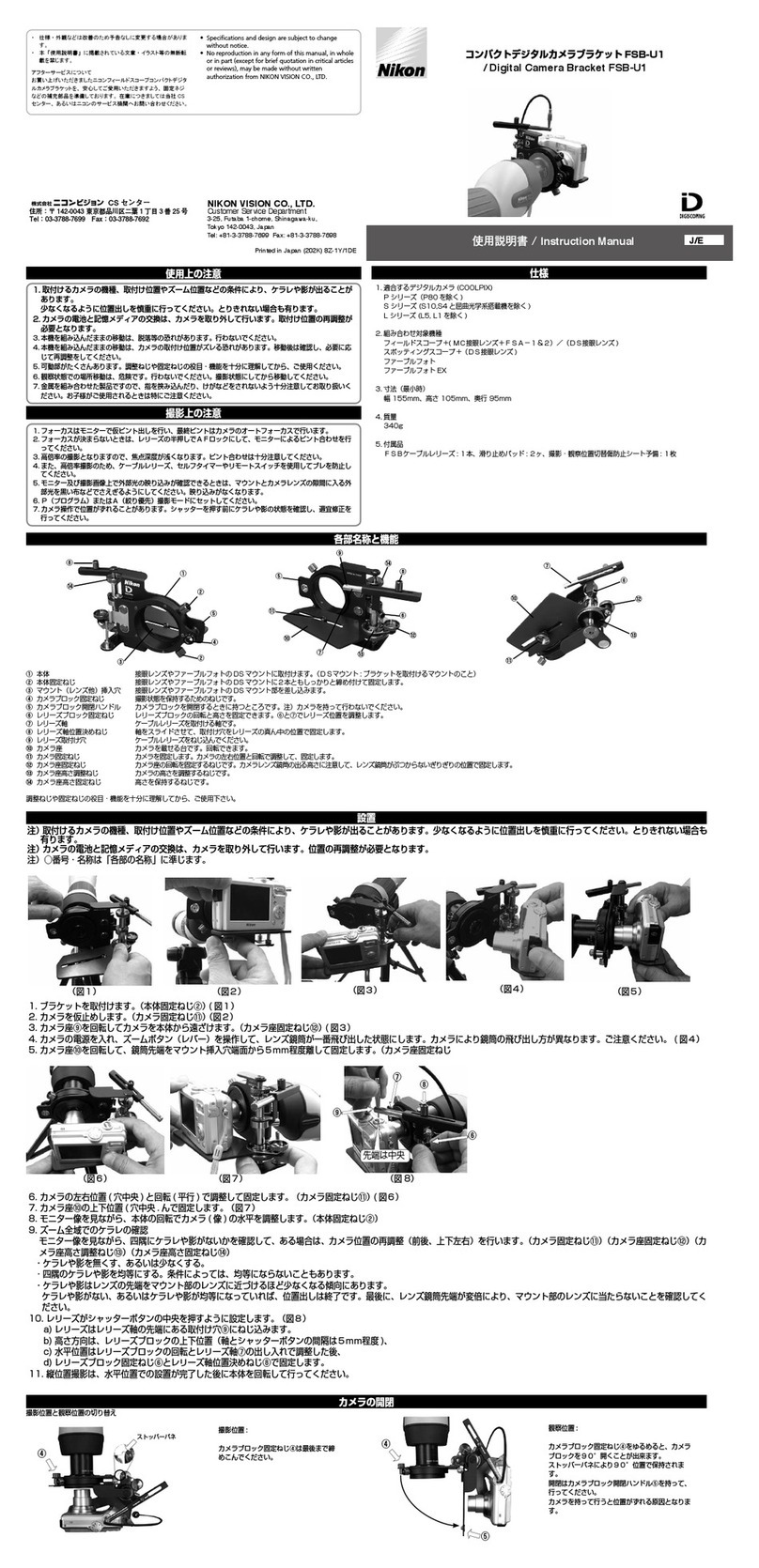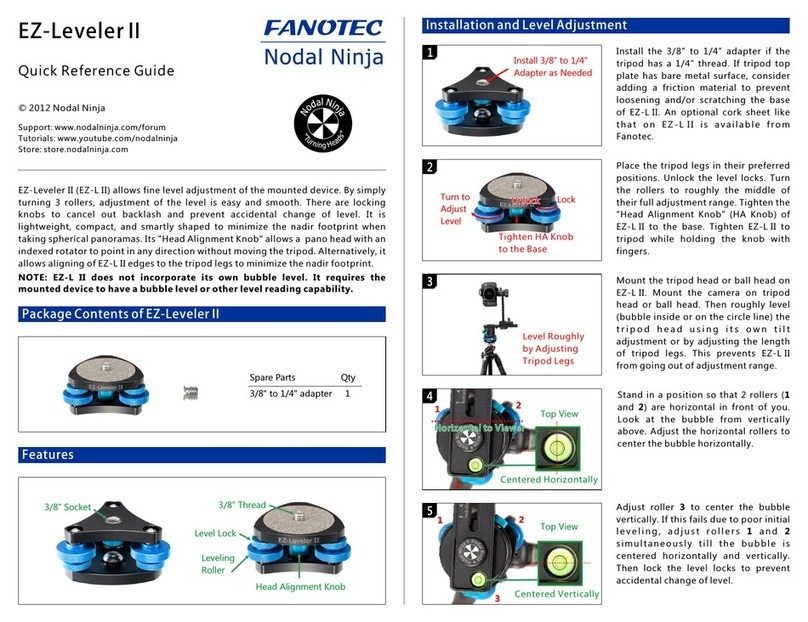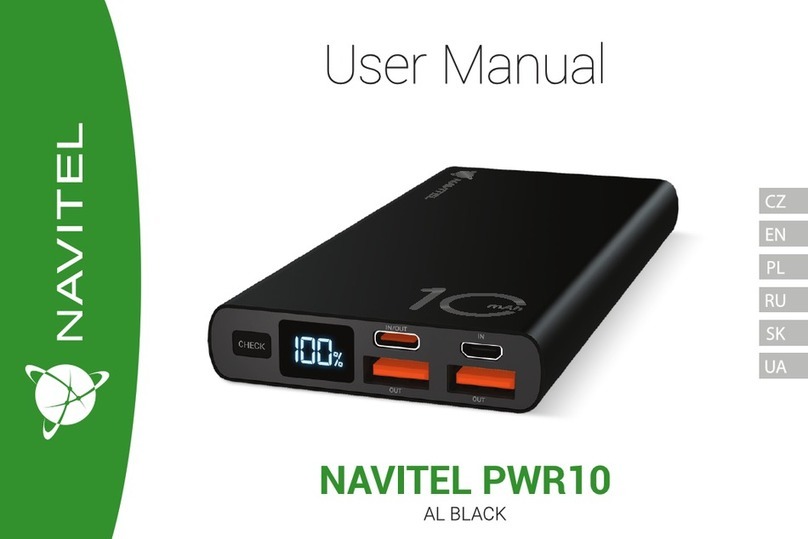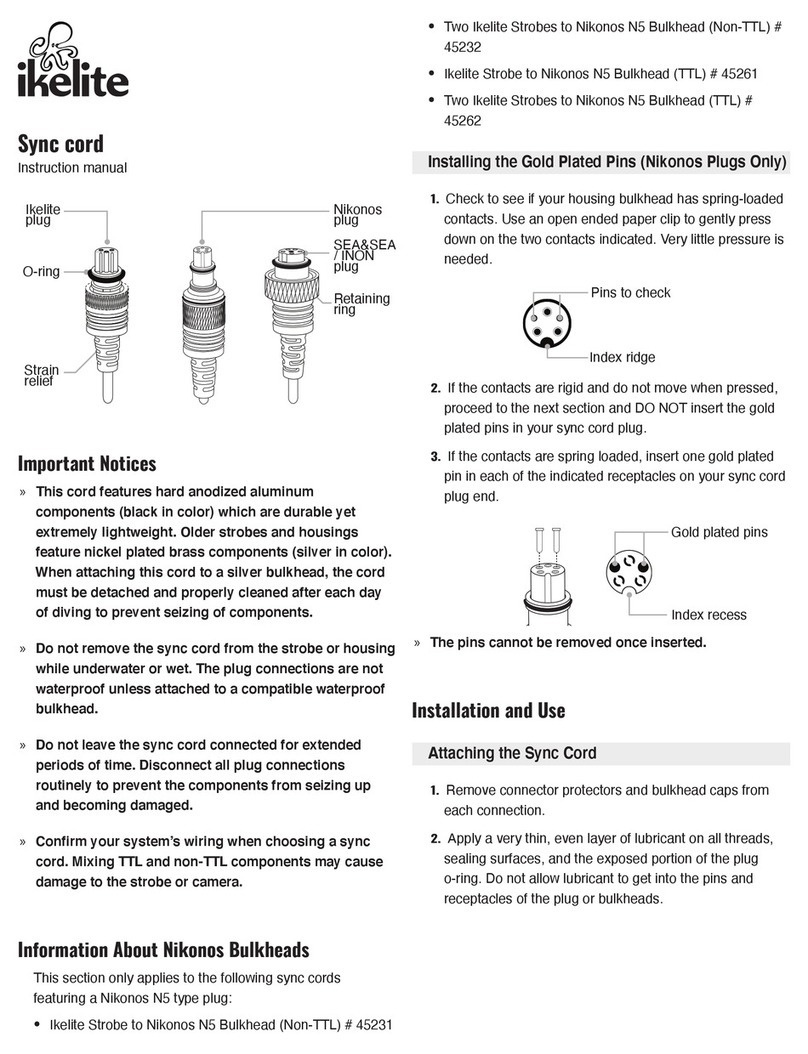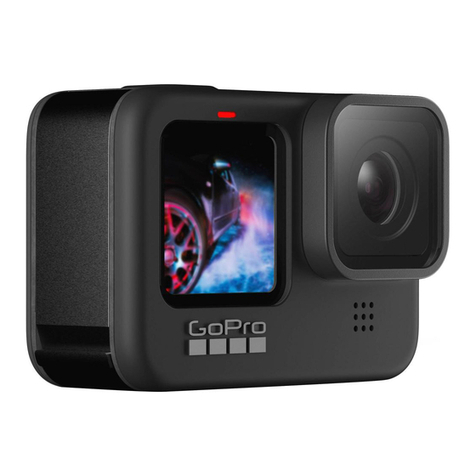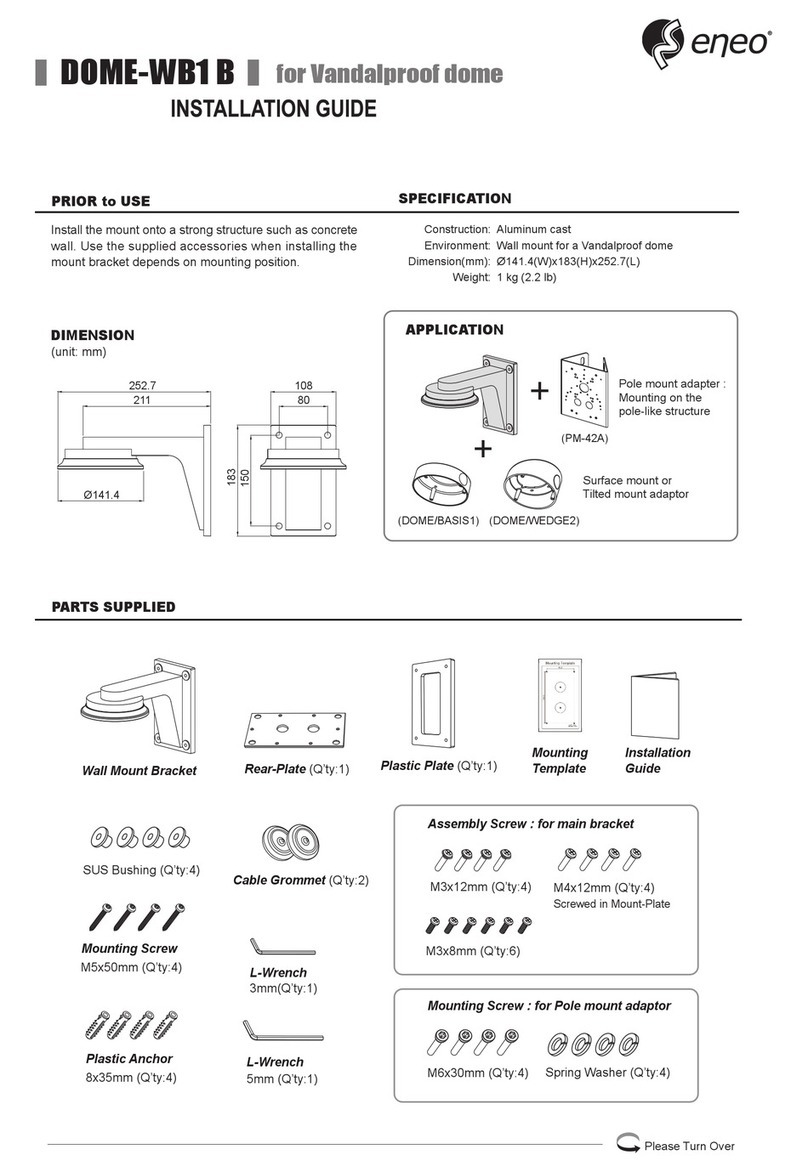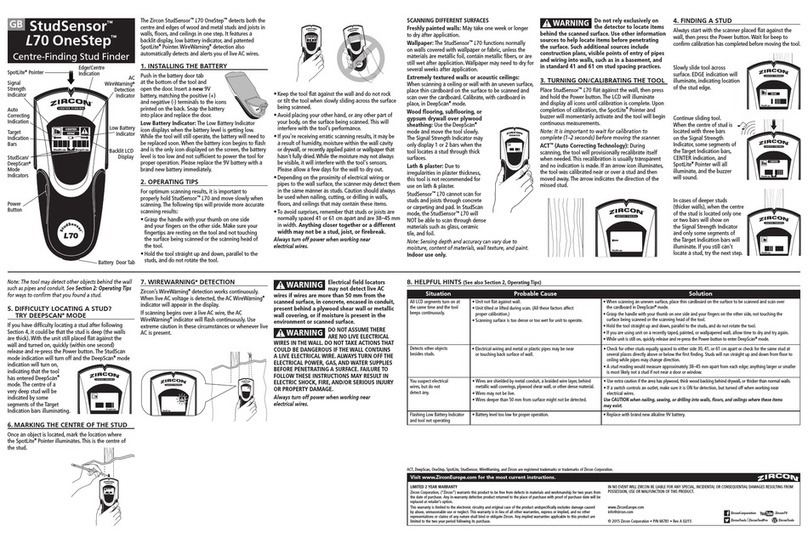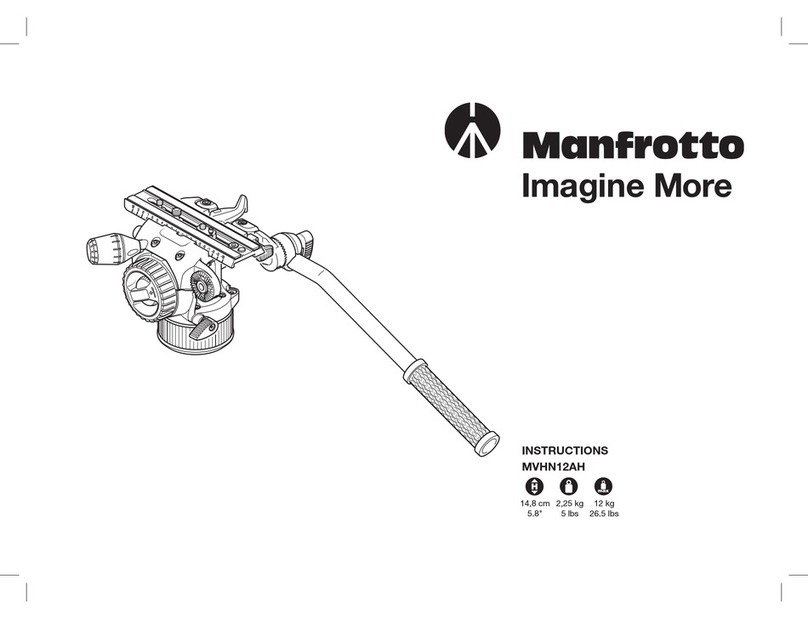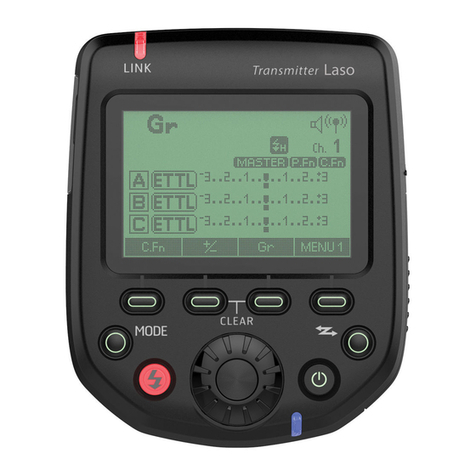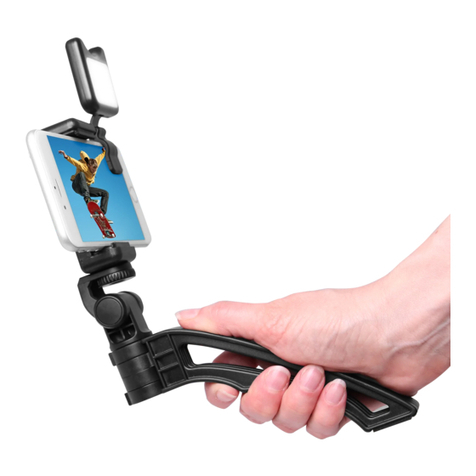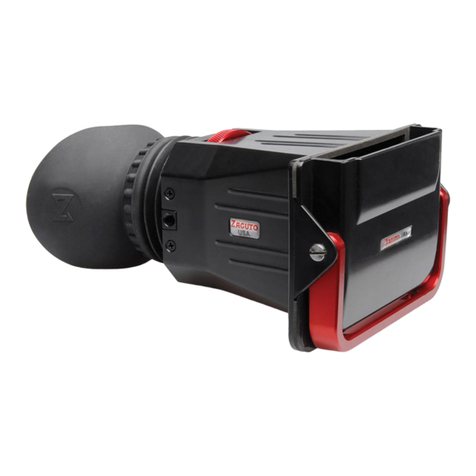Cinecta MX-1 User manual

CINECTA MX-1 user’s manual
Dear User,
We would like to introduce you to the CINECTA MX-1 camera stabilizing system.
The CINECTA MX-1 camera stabilizing system was specifically developed for DSLR cameras. It can be
used for any camera as long as it weighs less than 2 kilograms. Our system helps you shoot wobble
and judder-free video even when moving quickly over an uneven surface.
The CINECTA MX-1 camera stabilizing system consists of three main parts:
CINECTA MX-1 supportive vest
CINECTA MX-1 stabilizing arm
CINECTA MX-1 sled
In order to set up your new camera stabilizing system it’s indispensable that besides reading this
written manual you follow our video on the subject. The video can be found here:
www.cinecta.com/video, or directly available on our website under the Videos Menu.
To follow the steps of the manual please also watch our video!
The CINECTA MX-1 stabilizer vest attaches the system to the cameraman's body; it evenly distributes
the weight of the rig and the camera on the user's upper body. If accurately set it makes fieldwork
easy and effortless.
The vest can be adjusted to the height of the user with the thumbscrew located on the front. The
heavy-duty buckles and straps securely hold the rig - for this, it is absolutely necessary that the straps
are set as tight as possible without causing discomfort. With loose straps the device cannot operate
properly, such use may be dangerous, and could damage the system. The proper adjustment of the
waist is also very important; adjust its height to fit to the height of your hipbone.
The purpose of the CINECTA MX-1 sled is to stabilize the camera vertically, and this part makes it
possible that the cameraman could move the camera freely to the required direction. Special bearing
ensures precise operation. The sled can be used without the other elements of the system, by
holding in hand, but in this way it cannot reach the same stability that the complete system provides.
The precise adjustment of the sled is paramount for perfect wobble free shots.
The sled is not shipped fully assembled, as a first step with the included screws and Allen wrench
attach the stage assembly –later you will attach your camera on the top of this.
The lower weight bracket can be installed in two ways for practical reasons –the angle of its setup
depends on the weight distribution of your camera and also on the angle that the camera sets with
the stage unit.
The sled has a gimbal assembly, which allows smooth movements in all directions and balance at the
same time.

CINECTA MX-1 user’s manual
In the center post of the sled there is a cable channel providing space for connecting a monitor
mounted on the base bracket with the camera mounted on the stage assembly –this way the cabling
won’t impair the operation of the rig.
The camera has to be mounted on the sled ensuring that its center of gravity coincides approximately
with the axis of the center post.
Determine the center of gravity of the camera, by putting it on a cylindrical object. If the center of
gravity of the camera is exactly above the center of the cylinder, the camera does not wobble.
It is important to center the sleigh on the stage unit, in this way subsequent fine adjustments can be
carried out in all four directions.
The stabilizing system can be customized for cameras weighing between 1 and 2 kilograms. If your
camera is lighter than 1 kilogram, it is necessary to attach extra weight to the stage assembly. You
can find 4 pieces of 80 grams weights in the package; they can be attached to the stage with the
included screws. These screws should only be used in case you need the extra weights, their
unnecessary use might cause injury.
The amount of weights to be mounted on the base bracket depends on the weight of the camera and
the position of the gimbal. (You will not need more weight then we supply in the package.)
After you have attached the camera and the right amount of weights, you have to put the gimbal into
a position where the center post balances horizontally.
Then you have to fine tune the stage assembly by moving the sleigh (with the camera attached to it)
to the front/back and sides, while the center post is still in horizontal position. You have to find the
position where the camera doesn’t exhibit any force that makes the center post to rotate. If you have
found the resting position then the setup was successful.
Then we continue to the vertical adjustments. Fine tune the position of the gimbal until the center
post slowly turns vertical. Hold the handle with one hand while moving the center post to horizontal
then let go of the center post. The fine tuning is perfect when it reaches vertical between 2 and 3
seconds, adjust the gimbal until you achieve this.
If you move the sled by holding the gimbal handle back and forth and during this movement the
center post does not tilt you have completed the fine tuning successfully.
The inner diameter of the gimbal handle is 16mm, equal to the size of the standard stand connector.
If you have such a stand, you can use it to hold the sled, while setting it up. Before attaching to the
stand make sure that it can handle the weight of the sled.
The CINECTA MX-1 stabilizing arm acts as a shock absorber for the camera sled, it filters out the
vibrations from the cameraman’s movement. Special ball bearing mechanism ensures its precise
operation. The tension of the spring can be regulated with the built-in adjustment screw. You can use
cameras weighing up to 2 kilograms with our system.

CINECTA MX-1 user’s manual
Let’s see the system during operation!
Attach the stabilizing arm to the properly adjusted vest (while wearing it). To do so, remove the
thumbscrew from the vest and slide the connector of the arm on the one on the vest; then put the
thumbscrew back and gently tighten it.
After this, attach the handle of the gimbal assembly to the connector of the stabilizing arm.
The tension of the spring is perfect when the resting position of the arm is exactly horizontal. Use the
adjustment screw on the arm to fine tune the arm for the weight of your camera.
(If with the highest tension setting your camera still falls below horizontal, then you overloaded the
rig; you have to reduce the load, otherwise the system might get damaged.)
Now the CINECTA MX-1 camera stabilizing system is fully operational!
During filming, gently guide (with your fingertips) the rig with one hand on the center post and the
other hand on the handle of the gimbal. The system operates properly if you keep a straight posture
during filming.
To achieve the desired professional recording quality, a lot of practice is required. Harness the
potential of CINECTA MX-1 camera stabilizing system! Good shooting!
Practical advice
Using the CINECTA MX-1 camera stabilizer system requires extreme caution. Before filming, always
check each component of the system; make sure that they are well adjusted and they function
properly!
Using the system requires appropriate clothing.
During shooting, the cameraman has to pay attention to multiple things, it is advisable to plan every
move and practice them, in more complex situations use assistants. Lateral and backward movement
can be very dangerous, especially around obstacles and stairs. Always be careful!
Always move with a straight posture, do not bend in any direction, and make sure to hold your
balance! On moving vehicle, be extremely careful; only use the device when it’s absolutely safe!
Always ask permission from the driver of the vehicle!
Moving parts of the camera stabilizer system can cause injury, never put your finger inside them! Be
extremely careful when working among children!

CINECTA MX-1 user’s manual
Maintenance
The bearings of the CINECTA MX-1 camera stabilizer system are maintenance free and do not require
greasing or oiling. The lubrication of the adjustment screw of the spring may decrease by long-term
use, if the screw gets stiffer than usual, small pepper-sized grease can provide the proper lubrication.
Do not use the device in dusty or wet environment!
Pay special attention keeping the connector parts of the system clean!
Only clean the rig with a dry cloth!
Table of contents

